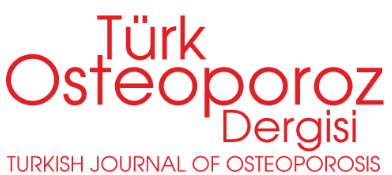ABSTRACT
Objectives:
The aim of the present study was to determine the 25-hidroxyvitamin D (25(OH)D) levels in patients with stroke and to investigate its relationship with the patients’ functional status.
Materials and Methods:
Stroke patients admitted for inpatient rehabilitation between February 2009 and January 2011 were evaluated retrospectively. Thirty-six patients who had records of serum 25(OH)D concentrations and functional outcome assessment by Functional Independence Measure (FIM) on admission (in the first 24 hours) were included in the study. The patients’ age, gender, etiology of cerebrovascular accident, affected side, disease duration, FIM scores, total calcium and 25(OH)D concentrations were recorded.
Results:
The mean age of the participants (18 women, 18 men) were 66.3±13.6 years. The mean concentration of the serum 25(OH)D was determined as 16.2±13.1 ng/mL. Serum 25(OH)D levels of less than 10 ng/mL was observed in 16 (%44.6) and vitamin D concentrations ranging from 10-20 ng/mL in 9 (%25) patients. 25(OH)D levels did not correlate either with the patients' age or disease duration. Additionally, no statistically significant correlations were found between vitamin D levels and FIM scores.
Conclusion:
Regardless of the patients’ functional status, reduced serum 25(OH)D concentrations was identified in the majority of stroke survivors. As it is well-established that vitamin D levels were closely associated with osteoporosis and fracture risk, it should be kept in mind that early diagnosis and treatment of D vitamin deficiency are important in patients with stroke. (Turkish Journal of Osteoporosis 2011;17:54-8)



